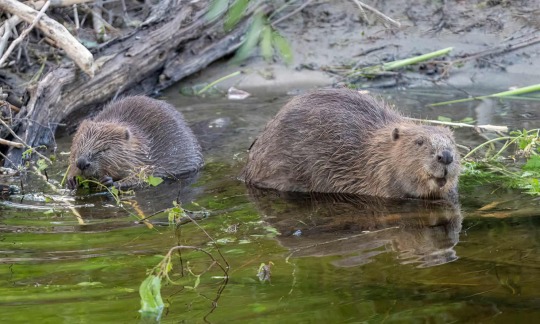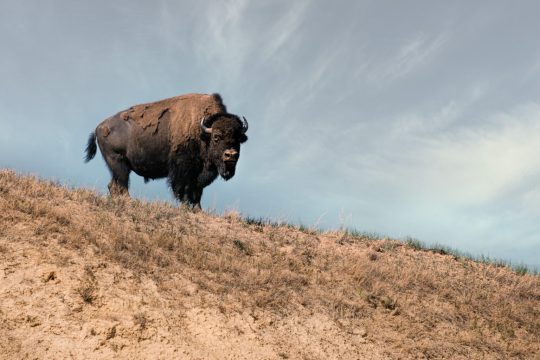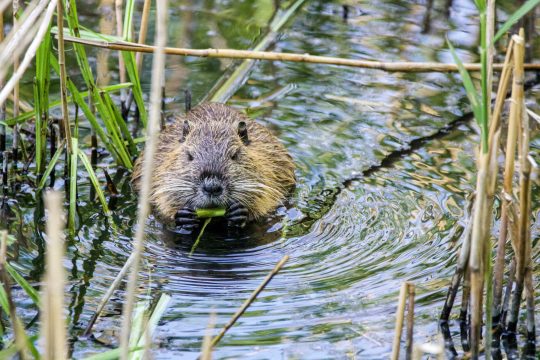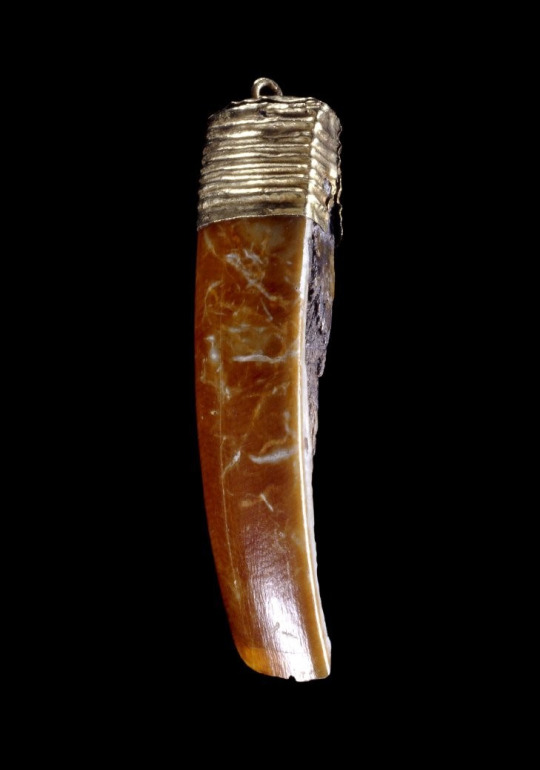#eurasian beaver
Explore tagged Tumblr posts
Text





Eurasian Beaver/bäver. Värmland, Sweden (April 17, 2022).
189 notes
·
View notes
Text

PEOPLE THIS IS NOT A DRILL BEAVERS ARE GOING TO BE FREELY RELEASED INTO THE WILD IN THE UK THIS IS HUGE!!!
It is such, such a big deal. The difference this will make for biodiversity, for carbon sequestration, for protecting us from flooding, for nature connection. People have been fighting so hard for so long to bring our beaver neighbours home and free them from the fences they’ve been kept behind. Not ashamed to admit I’ve cried a bit today after hearing this news. This is a wonderful step to make us just a bit wilder, a bit more ecologically intact, a bit more free. Moments like this remind me that progres seems unthinkable until it happens, and then it feels inevitable. I can’t wait for the first release - and shoutout to the illegal beaver bombers who got them a foothold when red tape was holding people back.
Lynx next!!!!
#solarpunk#social justice#hopepunk#environmentalism#cottagepunk#optimism#community#bright future#climate justice#rewilding#nature restoration#beaver reintroduction#Eurasian beaver#hope#joy#rare Britain W
1K notes
·
View notes
Text

ALPACA-TOBER!
DAY 31!
PASSION! FLAVOR!
FOLLOW YOUR DREAMS!
Thank you all so much for reading!
I apologize for the inconsistencies and delays and I am grateful that you stuck with me to the end. There was also much more that I wanted to show, but the format and my lack of discipline made it difficult to include everything.
I would be lying if I said I was completely satisfied with this project, but I am proud of being able to finish this first attempt at it.
Thank you all again for sticking by and reading!
Please enjoy the story and we will see you next ALPACA-TOBER!
#fan art#kemono friends#alpaca suri#inktober#japanese crested ibis#alpaca huacaya#passenger pigeon#mountain tapir#african wild dog#eurasian beaver#margay#dhole#short-beak common dolphin
33 notes
·
View notes
Text

Eurasian Beaver
6 notes
·
View notes
Text

Cookin up some more OCs like I said I would. Take this beaver this time 🦫
2 notes
·
View notes
Text
youtube
At Mossy Earth, we're always exploring nature-based solutions for our rewilding projects. With numerous initiatives across Scotland, delving into the impact of beavers has piqued our curiosity. Join us as we uncover the incredible role these creatures play in restoring ecosystems and revitalizing landscapes.
🌾 To support our work you can become a member here: https://mossy.earth
MOSSY EARTH MEMBERSHIP
===============================
The rewilding membership that restores nature across a wide range of ecosystems.
🌲 Support a diversity of ecosystems
🐺 Rewild habitats to bring back biodiversity
🦫 Fund neglected species & ecosystems
Learn more and become a member here: https://mossy.earth/
⏱️TIMESTAMPS⏱️
0:00 Intro
1:01 History of beavers in Scotland
3:15 Benefits of beavers to the Ecology
6:36 Benefits of beavers to the people
🌳 MENTIONED IN VIDEO
Beaver Trust - https://beavertrust.org/
Toms Farm - https://argatyredkites.co.uk/
Farms instagram - https://www.instagram.com/argatyredki...
🔎 ABOUT THIS VIDEO
===============================
In this video, we delve into the fascinating world of rewilding, with a focus on the remarkable role of beavers in Scotland. We explore the history and resurgence of Eurasian beavers in the UK, from extinction to reintroduction efforts as we showcase the invaluable contributions of beavers to wetland ecology and biodiversity, while addressing challenges and misconceptions surrounding their reintroduction.
#Mossy Earth#solarpunk#rewilding#beaver#Eurasian beaver#uk#Britain#Scotland#reintroduction#farmland#farm#water retention#wetland#Youtube
6 notes
·
View notes
Text
“The Eurasian beavers living in Czechia do not particularly understand bureaucracy.”
Mood
https://english.radio.cz/beavers-build-planned-dams-protected-landscape-area-while-local-officials-still-8841536

A beaver colony in the Brdy region has gained overnight fame by building several dams in the Brdy protected landscape area, creating a natural wetland exactly where it was needed. It saved the local authorities 30 million crowns, and has the public cracking jokes about public administration and red tape.
The administration of the Brdy protected landscape area, which had gained approval for the 30 million crown project, was dealing with red tape and seeking the respective building permits from the Vltava River Basin authorities when the dam project was completed almost overnight by a local colony of beavers.
They could not have chosen their location better –erecting the dams on a bypass gully that was built by soldiers in the former military base years ago, so as to drain the area. The revitalization project drafted by environmentalists was supposed to remedy this. Bohumil Fišer, head of the Brdy Protected Landscape Area Administration says Nature took its course and the beavers created the necessary biotope conditions practically overnight.
26K notes
·
View notes
Text
Loss and Reintroduction of Beavers
Some explanation of the importance of beavers and how reintroduction is going in Eurasia.
Beavers
In North America, beavers are a keystone species. They influence the movement of rivers, and thus, impact many other species in biological communities. They provide food to species they are prey of, and change the landscape with their own eating habits.
The dams they create increase sizes of ponds and can become wetlands - increasing the habitat space for other species. This also increases biodiversity by allowing plants that thrive in flooded areas to emerge while reducing flood risks by holding back large build-ups of water1. Additionally, dams are important filters for downstream water. Water run-off from urban and agricultural areas often carry harmful amounts of sediment, nitrogen, and phosphorus, which are primary sources of algal blooms - an occurrence that often results in a lot of fish dying. Beaver dams help filter these excess nutrients from going downstream, making it cleaner2.
The functions of dams could be done by human intervention and innovation, and in many places are, but beavers are completely content to create and maintain dams, why not let them? They are useful aside from dams, anyway, as they also serve the important role as a herbivore and a prey animal for other species.
Gone from Eurasia
For centuries, beavers have been highly important to humans, as well. The Eurasian beaver, also called the European beaver, was hunted extensively for its fur, meat, and castoreum, which is used in fragrances and food. They became extinct in England, Wales, and Scotland by the 1500s3. By 1900, the population was about 1,200 individuals in Europe.
These losses resulted in biodiversity and habitat quality loss for Eurasian countries. Multiple studies have reported on lower plant diversity, increases in dominant plant species foliage cover, lower invertebrate diversity, and many other impacts as a result of the absence of beavers4. Many studies, however, specifically reflect on the impact of beaver loss in the context of reintroduction.
Reintroduction
The Eurasian beaver now has an estimated population of 1.2 million5. The IUCN Red List last assessed it in 2016 and it is in the “Least Concern” category6.
Eurasian beaver reintroduction has taken place in many countries to varying degrees, including France, Finland, Germany, Latvia, Lithuania, and Poland7. Many countries, like France and Poland, faced issues relating to a lack of coordination with other official parties and establishing procedures to ensure the success of the reintroduced animals7. In other places such as Latvia and the Netherlands, reintroduction faced issues associated with human activity, like damage to crops and drainage canals7. These down sides are more of a result of continual habitat loss for wild species as opposed to a problem with the animals themselves.
The benefits of reintroduction have been extensive. In places like Scotland, reduced downstream levels of phosphorus and nitrogen because of dams have been observed, as well as the presence of organisms indicative of enriched conditions9.
In Britain, reintroduction trials have resulted in increased biodiversity in plant and animal species, and more diverse landscapes that support different wildlife and human activities11.
There are also some unintended benefits of beaver reintroduction. A study in Sweden reflects on the unexpected irruption of the beaver population, which is usually expected to not occur because the species faces the same aboriginal factors that regulated their numbers before extinction8. Witnessing the irruption of the Sweden beaver populations led researchers to more closely assess the relevant environmental factors and theorize that wolves might be the missing aboriginal factor that would have limited the beaver population8. Reintroducing and monitoring beavers in Sweden raised further awareness and knowledge about how the environment might have been kept in check before human alteration. It lifted new questions and information that can be used in further research and theorizing.
Tourism is another factor not as frequently considered with beaver reintroduction. Wildlife tourism can be a dissenting topic because of its history of environmental damage and intrusion in ecosystems. But more recent research has enabled it to become less intrusive and able to help people learn about the environment without harming it. In Great Britain, one study found tourism to see a reintroduced population of beavers has been economically beneficial to the local community10. Many people now actively seek out positive experiences with the environment, especially when it involves cute rodents. Fortunately, this provides more reason for environmental initiatives to protect and improve the ecosystems around us.
Reintroduction takes decades if not centuries. After hundreds of years without a major species, ecosystems need time to readjust. Additionally, animal species cannot be simply classified as ‘good’ or ‘bad’. They can be invasive in some places, and even in their endemic habitat might sometimes be deleterious. The spread of human influence and activity complicates the relationship that beavers have with their environment. But data and current experiences indicate that beavers are ultimately crucial to many ecosystems. We will likely continue to see these benefits as environments readjust.
Additional Resources
1.https://parks.canada.ca/pn-np/mb/riding/nature/animals/mammals/castors-beavers
2. Habitat Engineering by Beavers
3. https://ptes.org/get-informed/facts-figures/eurasian-beaver/
4.https://www.martinezbeavers.org/wp-content/uploads/2018/01/Stringer-Gaywood-2016-The-impact-of-beavers-on-biodiversity-and-the-ecological-basis-for-their-reintroduction-to-Scotland-Mamm-Rev-DOI-10.1111-mam.12068.pdf
5.https://scottishwildlifetrust.org.uk/species/beaver/#:~:text=By%20the%2016th%20Century%2C%20the,to%20number%20around%201.2%20million.
6. https://www.iucnredlist.org/species/4007/197499749
7.https://www.researchgate.net/profile/Fran-Tattersall/publication/229639593_Reintroducing_the_European_Beaver_to_Britain_nostalgic_meddling_or_restoring_biodiversity/links/602fda36a6fdcc37a8382690/Reintroducing-the-European-Beaver-to-Britain-nostalgic-meddling-or-restoring-biodiversity.pdf
8. https://www.jstor.org/stable/pdf/2386513.pdf
9. https://onlinelibrary.wiley.com/doi/abs/10.1111/fwb.12721
10. https://www.sciencedirect.com/science/article/pii/S1617138120301667
11. https://ecopsychology-journal.eu/v7/EJE%20v7_Gandy_and_Watts.pdf
#beavers#European beaver#eurasian beaver#article#research#environment#species extinction#species reintroduction#nature
1 note
·
View note
Text

Two Eurasian beavers eating. Beavers will return to west London for the first time in 400 years after funding from the capital’s mayor. A breeding pair could arrive at their new home in Paradise Fields, Ealing, as soon as this autumn
Photograph: Joshua Glavin/Beaver Trust/PA
#joshua glavin#photographer#beaver trust#pa#eurasian beavers#beavers#animal#mammal#wildlife#london#england#paradise fields#ealing#autumn#nature
25 notes
·
View notes
Text
"In my article on Tortoises, I introduced you all to the concept of a keystone species– an organism (animal, plant, bacteria or fungi) that has an inordinate impact on its surrounding ecosystem. These species make or break habitats and play a crucial role in maintaining their given ecosystems' structural and functional integrity. I’m bringing this up because (surprise, surprise) beavers are an incredibly important keystone species."
Read the full article here:
#beavers#North American beavers#eurasian beavers#animals#semi aqautic#dams#dam-building#beaver dams#zoology#ecosytem#wetlands
0 notes
Text






Eurasian Beaver/bäver (and a Common Goldeneye/knipa couple). Värmland, Sweden (April 18, 2022).
122 notes
·
View notes
Text
In 2022, something happened in Britain for the first time in 6,000 years. Deep in the Kent countryside, a wild European bison calf was born as part of the Wilder Blean rewilding project. The last time wild European bison roamed Britain’s landscapes was after the last Ice Age, some 10,000 years ago, so it’s no wonder the calf’s arrival caused a stir. European bison were once a common sight across most of Europe. As the largest herbivore to roam the continent, European bison could be found from France all the way to the tip of the Black Sea in the Ukraine. The fossil record tells us that European bison have been roving the continent since the end of the Paleolithic Ice Age, with the earliest fossils dating back to 9,000 BC.
Now, bison are bouncing back. They have experienced a 166-fold increase in their population in the last 50 years. And these rates of return are not solely the reserve of the mighty bison. Other wild European mammals are also making a roaring comeback, and the speed of their resurgence suggests that wider, rapid natural regeneration is possible with multiple ecological, and therefore human benefits.

From 1960 to 2016, Eurasian beaver (Castor fiber) populations have ballooned 167-fold, from just a few thousand at the start of the 20th century to over 1.2 million wild beavers today. Grey seal populations have also grown by 6,273 percent and the population of Alpine ibex has risen by 417 percent. Eurasian badger populations have doubled, while Eurasian otter populations have tripled.
While these impressive rates of recovery are not reflected across all of Europe’s 250 wild mammal species, they do provide some evidence-based hope that wild mammals can once again flourish across Europe’s diverse and varied landscapes with the right support and policies in place.
The big picture
... Over the last 50 years the fate of some wild mammals across Europe has shifted. Some populations have experienced a rapid and dramatic increase over the last half century, reversing millenia of decline and offering fresh hope that nature can recover – if it’s given the chance.
Brown bear numbers have risen by an average of 44 percent between 1960 and 2016, while the Iberian lynx has seen its population grow by 252 percent. Humpback whales have seen their numbers rise by 37 percent between 1986 to 2016, while the pine marten – a natural predator to the invasive grey squirrel – has seen its population grow by 21 percent from 1986 to 2016. Some reptile species, such as the loggerhead turtle, have seen its numbers grow by 68 percent over the last 40 years.
The most impressive bounce backs, however, are among the beaver and bison – two species that play vital roles within ecosystems. Both beaver and bison populations have seen 167-fold increases over the last 50 years. These mammals help support a rich mosaic of habitats and biodiversity. Wild bison, for instance, trample and wallow in the soil and sand to create niche habitats for plants, insects and lizards, while also playing an important role in the dispersal of seeds.
Context and background
The impressive recovery rates over the past 50 years have been possible due to a shifting cultural and economic context. Alongside this, there is a growing scientific consensus of the importance of small and large mammals for sustaining biodiversity and helping ecosystems flourish. The sheer diversity of mammals, both in terms of their morphology and their roles within ecosystems, is testimony to the functions they perform. From the tiny bumblebee bat, which weighs just two grams, to behemoth blue whales, weighing in at 150,000 kilograms, mammals really do come in all shapes and sizes.

Wild mammals play a variety of leading roles within an ecosystem, from dispersing seeds, pollinating plants and regulating insect populations, to reducing disease transmission and creating niche habitats for other species. The European bison reintroduced to Kent in the UK have already started clearing paths through undergrowth, ripping the bark off trees, and wallowing around in the mud to make space for seeds and other habitats – natural processes that humans would struggle to replicate. Bison and other large herbivores are often labelled ‘ecosystem engineers’ for this very reason – they shape and manage the land they reside on.
Some species of mammals – such as the magical beaver – are considered keystone species due to their ability to shape the ecosystems around them, creating entirely new habitats through building dams where fish, birds and all manner of species can thrive. Other mammals, like bats, act as indicators of healthy and functioning ecosystems. Between 1974 and 2016, Geoffroy’s bat populations have increased 53-fold across Europe.
Wild mammals also have a role to play in reducing the damage and destruction wrought by climate breakdown. In the temperate climate of Europe, large mammals have been proven to reduce the risk of forest and wildfires by creating gaps in vegetation through grazing and trampling. In the summer of 2022, wildfires ravaged Europe, burning the second-largest area on record. As global temperatures continue to rise, wildfires will increase in their frequency and severity. Bolstering the population of large mammals could provide a useful tool in the fight against fires alongside deep and immediate cuts to emissions...
What’s more, the grazing of wild mammals can also help retain the carbon stability of soil over long periods of time. Soil contains vast amounts of carbon – more than all plants and the atmosphere combined – which makes ensuring its stability important for both climate efforts and environmental conservation. Mammals like the alpine ibex, which have seen their numbers grow by 417 percent from 1975 to 2016, are highly effective at stabilising soil carbon within grazing ecosystems.
-via Rapid Transition Alliance, March 29, 2023
#beaver#bison#mammal#ecosystem#ecology#endangered species#europe#united kingdom#kent#wildfires#rewilding#ecosystem restoration#good news#hope#hope posting
2K notes
·
View notes
Text

An Anglo-Saxon beaver tooth amulet discovered at the Wigber Low burial site in Derbyshire.
A 6th-century Anglo-Saxon riddle describes the beaver:
I am a dweller on the edge of steep stream banks, and not lazy at all, but warlike with the weapons of my mouth.
I sustain my life with hard labour, laying low huge trees with my hooked axes.
I dive into water, where the fish swim, and immerse my own head, wetting it in the watery surge.
The wounds of sinews and limbs foul of gore I can cure. I destroy pestilence and the deadly plague. I eat the bitter and well-gnawed bark of trees.
The Eurasian Beaver was hunted to extinction in Britain by the 16th century; since 2009, there has been an ongoing project to reintroduce them in Scotland.
#no idea there'd ever been beaver in Europe#no wonder they were so stoked to find more to kill in the New World#shiny objects#anglo-saxons#archaeology
562 notes
·
View notes
Text

ALPACA-TOBER!
DAY 12!
A surprise song!
#fan art#kemono friends#alpaca suri#inktober#japanese crested ibis#alpaca huacaya#mountain tapir#eurasian beaver#passenger pigeon
30 notes
·
View notes
Text
🚨 EURASIAN BEAVERS HAVE RETURNED TO ENGLAND AFTER BEING NEARLY POACHED OUT OF EXISTENCE ALMOST 500YRS AGO 🚨
57 notes
·
View notes
Note
i'm tired of you people only voting critter if its small enough to fit in your hand. critters of all size deserve respect and acknowledgement
If it helps, the Eurasian beaver is actually pretty big! It was close between critter and creature, but critter won.

75 notes
·
View notes